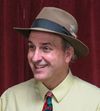Where is Geneva Terraces?
Sherbet-colored cottages in a mostly secret San Francisco neighborhood.
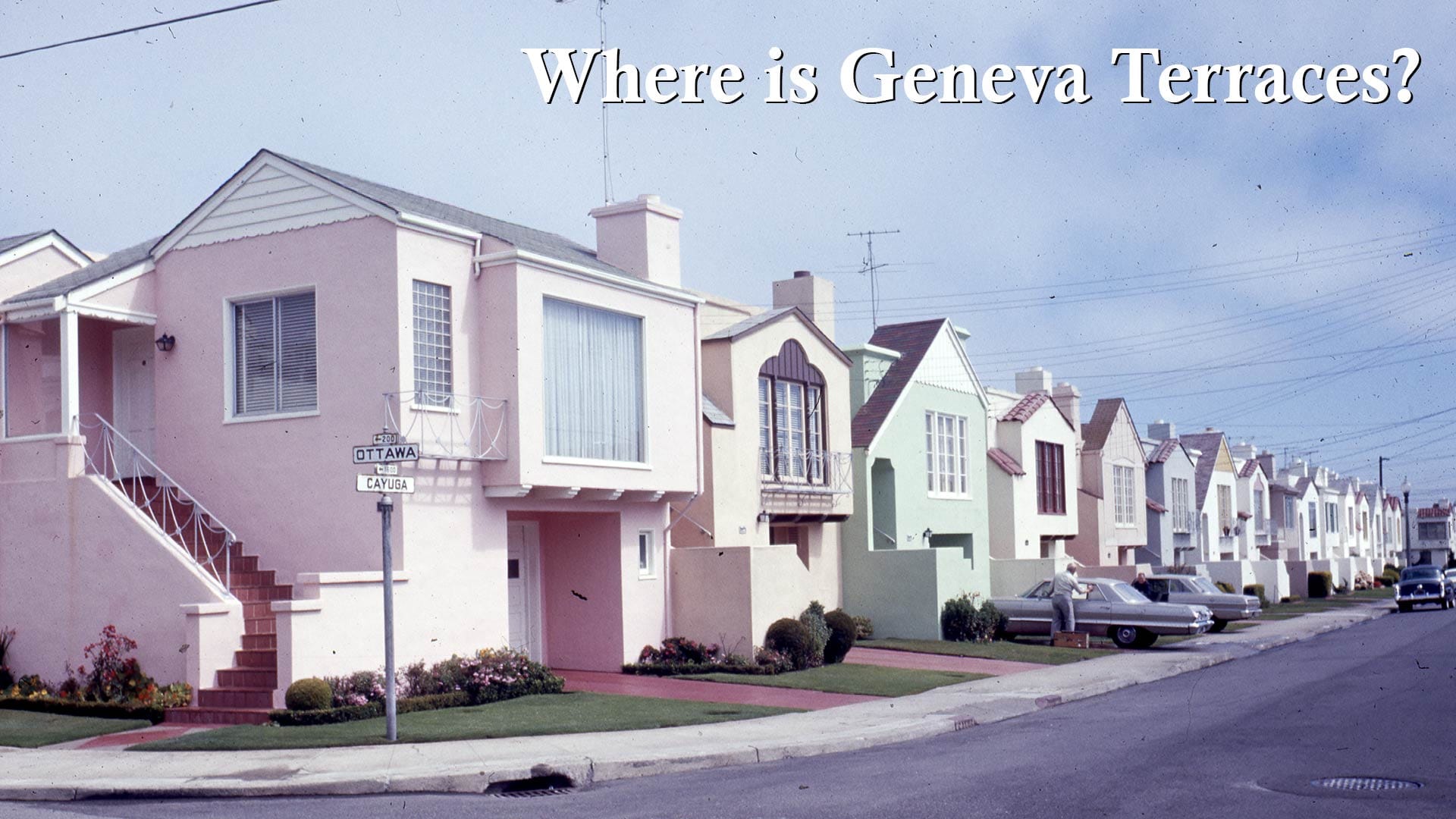
Some quick business before we get started:
1) The title should probably be Where are Geneva Terraces, but there aren’t really any terraces, as you’ll read, so it feels singular. Weird? Try to ignore it.
2) I’m closing down open access to the Grab Bags next week to only Friends of Woody again. Browse while you can, or join the clique (we have a secret handshake).
3) My New Year’s Resolution is a SFS event every month, some live, some online for our remoter members of the community. This month, on January 30, we’ll be visiting Beertown (virtually). The details are below.
4) I am very behind on my email. My great apologies to you all. I’ll catch up soon I’m sure! [Narrator voice: “he never would.”] Yes I will!
Now to our regularly scheduled historical wool-gathering:
Welcome to Ottawa and Cayuga Avenues in Geneva Terraces. I have always loved this image, which came out of boxes of anonymously taken 35mm color slides we were scanning at Western Neighborhoods Project for our OpenSFHistory program.
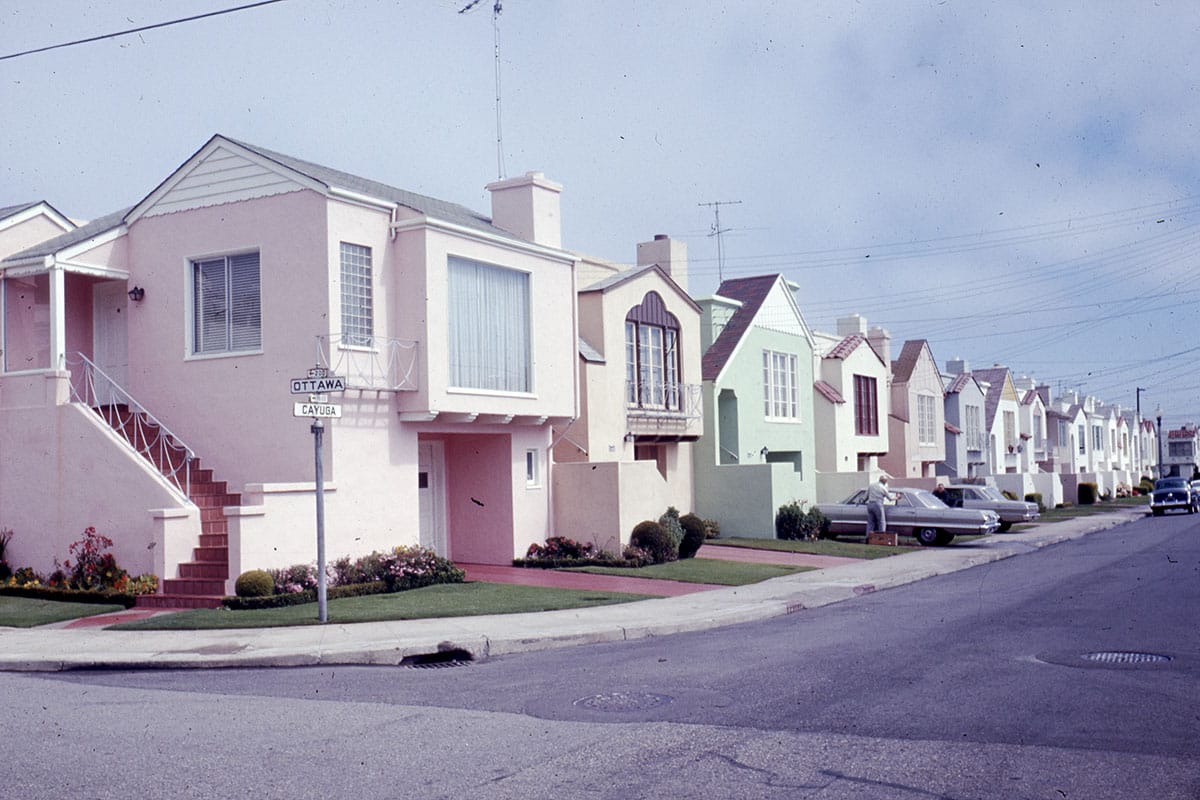
I am also a fan of the photo-realist-artist Robert Bechtel, an expert at capturing the familiar quasi-suburban life of San Francisco’s outer neighborhoods—quiet avenues with stucco row houses, strips of lawn, and cars in driveways.
You might remember we visited St. Mary's Park last year? Here’s a slice of that neighborhood in Bechtel’s brushes:
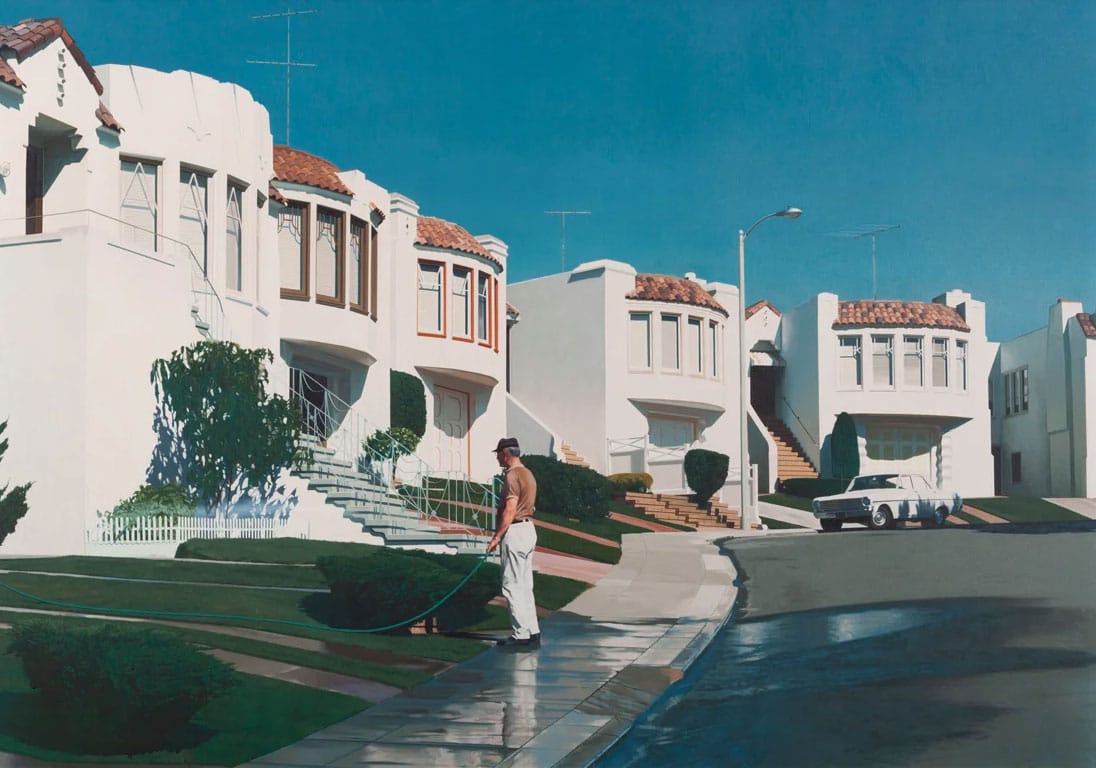
Geneva Terraces lies in the rough triangle south of Geneva Avenue between Alemany Boulevard and Interstate 280, in what Google maps would label the Outer Mission now, although some folks call it Cayuga Terrace, a name applied to the area by realtors shortly after World War II.
Still lost? We are near City College and the Balboa Park BART station, if that helps.
Street names in the area are mostly Native American tribe names and appear on the “West End Homestead” maps filed with the city in the 1860s. Geneva Avenue was inspired by small muddy pond in the depression meant to invoke glamorous Lake Geneva in Switzerland.
But into the twentieth century, this non-alpine gully between the San Jose and Mission Roads was open farmland with Islais Creek running through it to the bay.
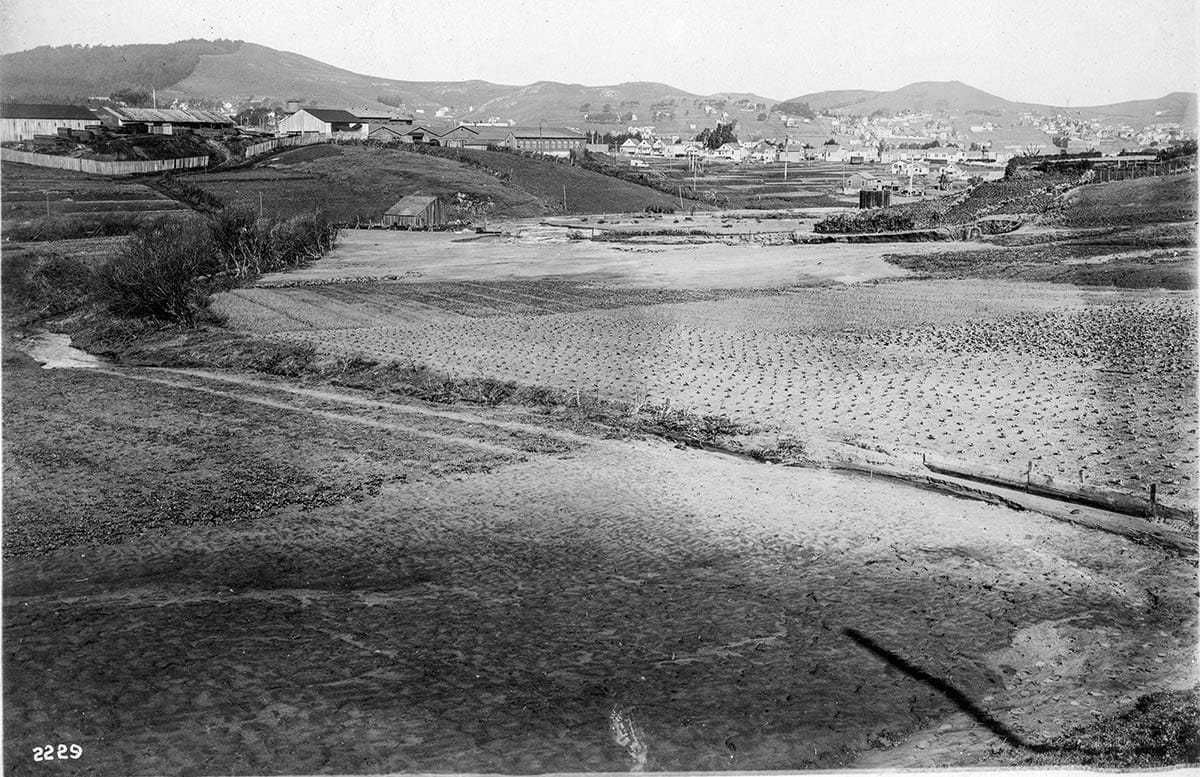
In the 1910s, the city buried Islais Creek in a sewer project and in the late 1920s, the real estate firm of Baldwin & Howell began filling the old farmland with stucco bungalows.
There was little terracing needed for Geneva Terraces, but every hopeful subdivision at the time was named Terraces or Heights. Baldwin & Howell were at the tail end of selling out Mission Terrace and Westwood Highlands, both restricted residential parks tailored for upper middle-class buyers, and initially, Geneva Terraces had the same marketing plan.
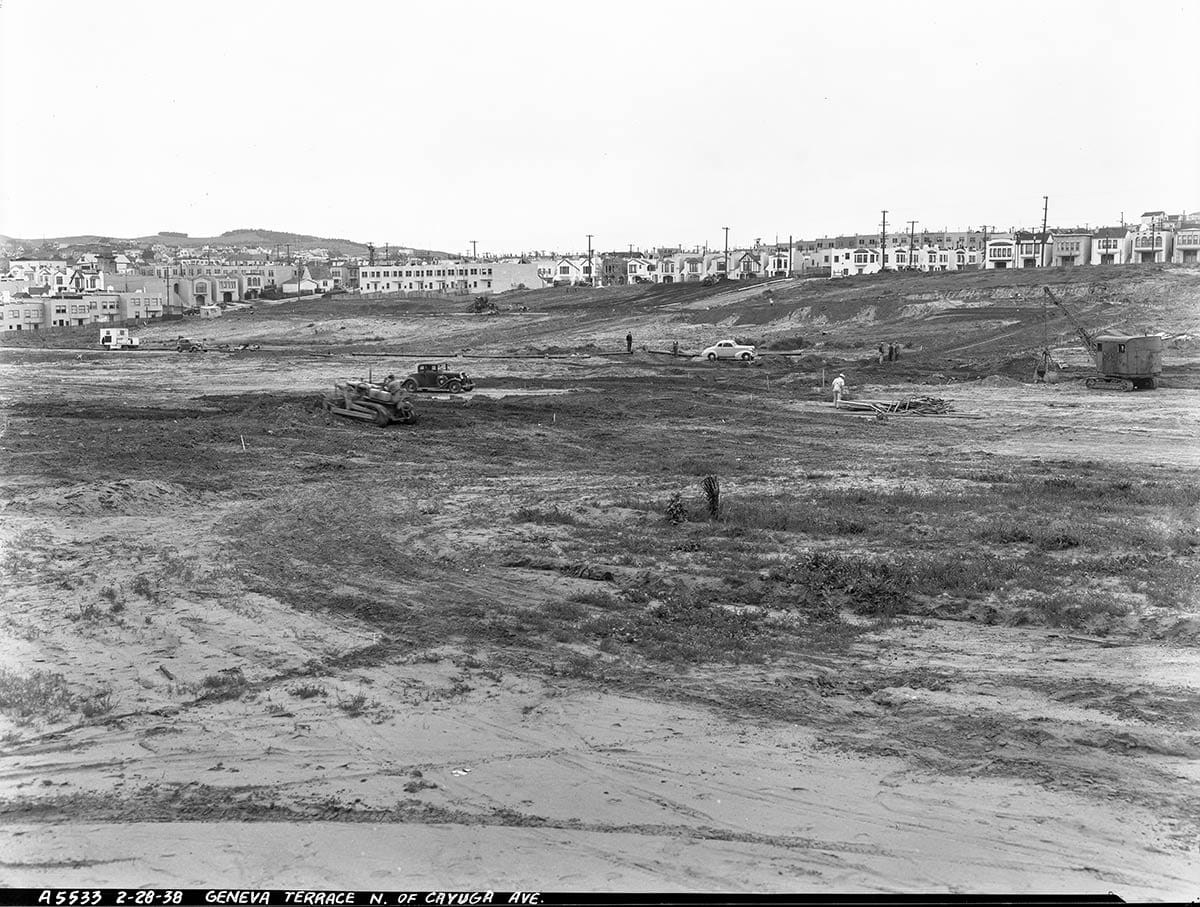
Prolific house architect Charles Strothoff designed five-room Mediterranean-inspired homes constructed by builder F. W. Varney, and the first houses went on sale for $6,500 just north of Geneva Avenue in 1927.
The onset of the Great Depression changed plans. Baldwin & Howell contracted with the Stoneson Brothers, who would later have great success creating the Lakeside neighborhood along 19th Avenue and the Stonestown Shopping Center, to build slightly humbler houses southeast of Geneva Avenue.
In June 1930, five-room houses were listed at $5,450, a not uncommon monthly mortgage payment in San Francisco today.
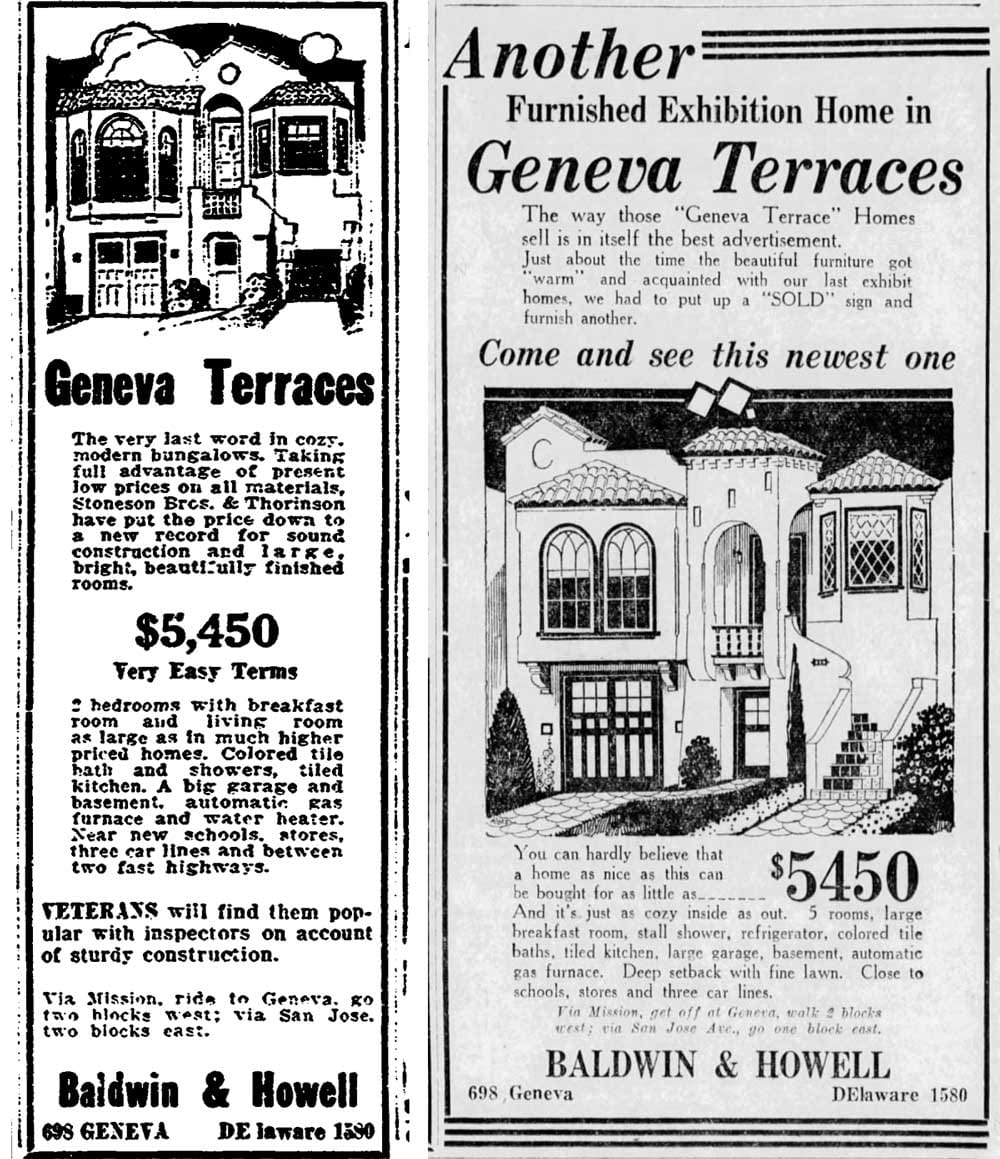
As with the hundreds of houses built at the same time in the Sunset District, these modest residences followed a cookie-cutter floor plan, but had lots of frosting to draw buyers.
Kitchens and bathrooms sported colored tile work with skylights and center patios (“daylight halls”) bringing in light. Outside, the stucco facades got bright pastel paint jobs and were tweaked with Old World elements to put mock Tudor cottages cheek and jowl with Mission chapels.
All the color didn’t help in the depths of the Depression. In January 1934, new Geneva Terraces houses were listed as low as $3,750.
Thanks to FHA loans, the market picked up by the time the Cayuga and Ottawa Avenue houses in our color slide were built. The model home for the block at 1556 Cayuga was priced at $6,000 in November 1938.
Who were the families moving into Geneva Terraces? Like in the adjacent Excelsior District, typical last names of buyers were Corradetti, Catelli, Del Carlo, and Bergolio—Italians moving out from North Beach or flats in the Inner Mission for the promise of a new home in a new neighborhood.
On November 9, 1938, almost certainly the first baby on the 1500 block was born to the De Capeva family, who had just purchased 1586 Cayuga Avenue, the second house in from the corner in our color image at the top of this story.
In spacious Geneva Terraces, one could even have a dog. Here is glazier Vincent J. Coll, who lived at 35 Navajo, showing off his doggy ADU (accessory dwelling unit) built for “Tiny.”
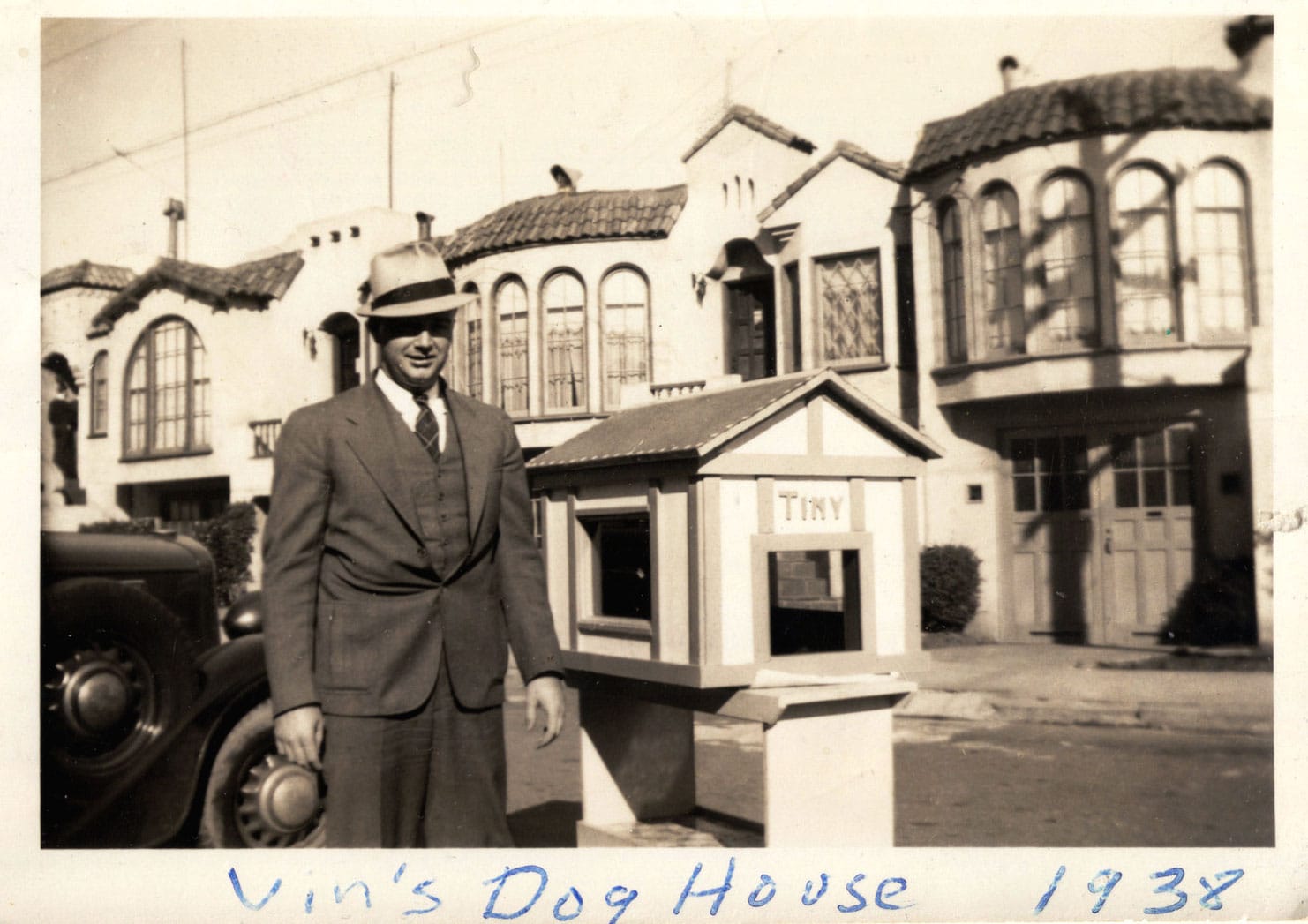
Residents out there mostly don’t call their neighborhood Geneva Terraces any more, but then they also don’t mostly paint their houses mint-green any more.
You should go take a wander, if just to see the very cool Cayuga Park and Playground next door.
Woody Beer and Coffee Fund
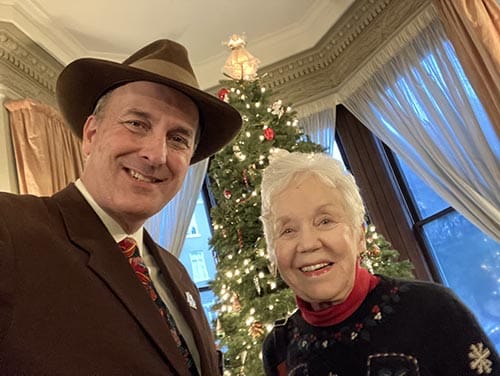
Man, I am so behind on my emails. Thank you all for writing and sharing holiday greetings and being nice people. Maybe it is easier just to meet in person and buy you a coffee? Or a beer? Some folks have generously paid for us to do so. Let me know when you are free!

